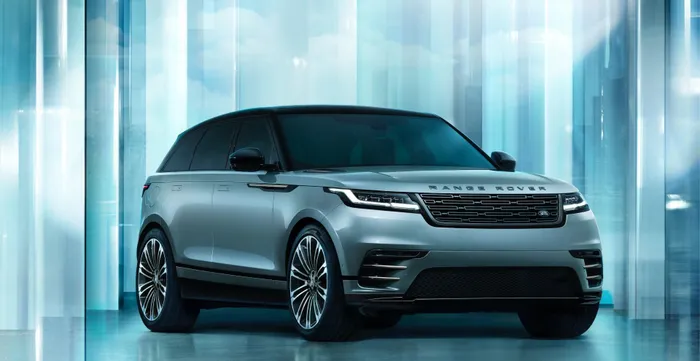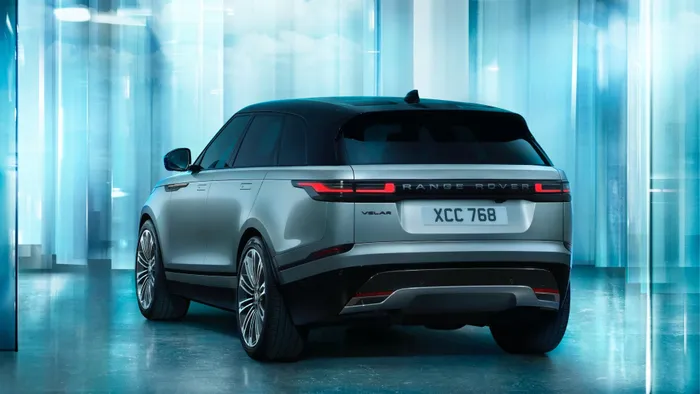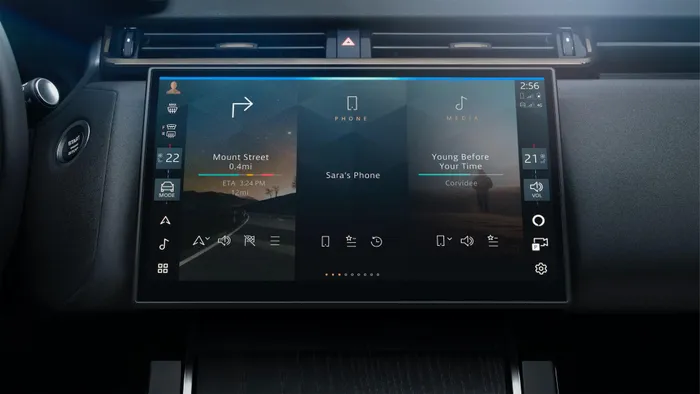Driving impressions: the stylish Range Rover Velar delivers impressive hybrid performance

The Range Rover Velar recently received some interior upgrades.
Image: Supplied
I’ve always maintained that Range Rover makes some of the most desirable and stylish SUVs in the world and despite having been around for a while now, the Velar is still very much a head-turner.
It recently received some interior upgrades, and we had a drive with the plug-in hybrid P400e Dynamic SE version.
Yes, another new energy vehicle from the same stable as Jaguar, which has forsaken the internal combustion engine (ICE) completely.
If you prefer something more “normal”, there are diesel options in the range as well.
Upgrades
The upgrade sees a larger 11.4-inch touchscreen infotainment system and an update to the company’s Pivi Pro system.
The system is certainly one of the best in the industry. It’s easy to use with crisp graphics and almost instant reaction to commands, but on the flip side, as part of the upgrade, most of the car controls have moved to the screen, freeing up space for a charge pad.
So, apart from the hazard lights, everything else is adjusted on the screen.
That means any changes to the temperature with different zones and fan speeds, volume or anything else for that matter, is done there, which, when you’re driving, is distracting and even dangerous.
Jaguar Land Rover aren’t the only manufacturer guilty of this but fortunately sanity has prevailed with global customer feedback and EU legislation forcing changes from next year.
The Velar espouses Range Rover’s premium and beautifully crafted interiors.
Soft-touch surfaces and stitched leather abound, the seats are just so and combined with the driving position, it’s a comfortable place to while away the time, whether in traffic or on a road trip.
Surprisingly for a rather large SUV, rear seating space isn’t as big as it seems, and with the driver’s seat set for my frame, I found it to be slightly cramped.
Perhaps they could have made the 673-litre boot a little smaller to accommodate more legroom.

The Velar plug-in hybrid engine switches off while coasting, allowing the brakes to harvest energy to the battery.
Image: Supplied
What is a plug-in hybrid?
If you’re still not sure what a plug-in hybrid electric vehicle (PHEV) is, it uses a conventional petrol or diesel ICE combined with an electric motor and a hybrid battery that is topped up by kinetic energy, like the brakes and can be fully charged at home or a charging station.
In this version of the Range Rover Velar it gets a 2.0-litre four-cylinder turbocharged petrol engine and an electric motor that combine to produce 297kW and 640Nm.
It can be charged quickly at a 50kW DC station or left overnight at home for a slower charge.
Using only the 15.4kW of usable battery, the Velar should give you a range of about 60-65 kilometres on a full charge.
I found it would discharge quickly using only EV Mode, which isn’t surprising considering its kerb weight of just over 2.2 tons, so I stuck mostly to hybrid mode.
Consumption
Range Rover quotes 2.2l/100km which at low speeds like peak hour traffic, shopping malls or in estates is possible. I managed 2.4l/100km driving to my partner’s house through the Pretoria CBD and afternoon highway traffic.
At higher speeds the engine seamlessly kicks in and when coasting will switch off just as quietly while the brakes harvest energy to the battery.
However, when the battery is depleted, the engine hauls along deadweight and in Save Mode figures will rise dramatically close to 10l/100km.

The Range Rover Velar has been upgraded with a larger 11.4-inch touchscreen infotainment system and an update to the company’s Pivi Pro system.
Image: Supplied
Driving
If you drive it hard, the battery will also deplete rapidly, but you will be able to get to 100km/h from a standing start in 5.4 seconds.
But the Velar isn’t intended to rip up the tar, rather it’s a refined, almost silent drive cocooned in luxury, like a Range Rover should. Well, except the SVR versions.
It’s well-planted when the throttle is floored but it does feel like the engine isn’t that fond of high revving with some protesting noise filtering through to the cabin.
As a luxury SUV it’s not the most engaging drive but it’s easy to maneuver with light steering providing decent feedback and will take on the twisties with minimal body roll.
The eight-speed automatic transmission is as smooth as you could want once you become accustomed to the swap between electric and ICE.
There are paddles fixed to the steering wheel which I used because they’re there, but the driving dynamics and shift patterns are good enough that it hardly warrants them.

The Range Rover Velar contours are smooth including the door handles.
Image: Supplied
The ride quality is as you would expect, very comfortable thanks to the standard adaptive suspension, although with the 21-inch alloys, road imperfections tended to be slightly jarring.
In keeping with the Land Rover ethos, the Velar has a full range of off-road goodies, albeit in softroader spec, so there’s no transfer case or low range.
Considering the profile of a buyer I doubt very much they’re going to be tackling tough 4x4 trails over the weekend, but it’s always reassuring to let the company’s Terrain Response do its thing when things get a bit tough.
Safety
On the safety front, you’re well taken care of with an array of features including six airbags, tyre-pressure monitors, electronic stability and hill descent control, trailer stability assist, adaptive cruise control, autonomous emergency braking, blind-spot monitoring and lane-keeping assist.
Summary
The Range Rover Velar has been with us for a while now, but it’s still one of the best-looking SUVs on the road. Granted, it’s expensive at R2 098 300 before options, but if you like the brand and are eco-minded, it’s a good proposition, although I believe the diesel options offer better value for money.
Related Topics:
